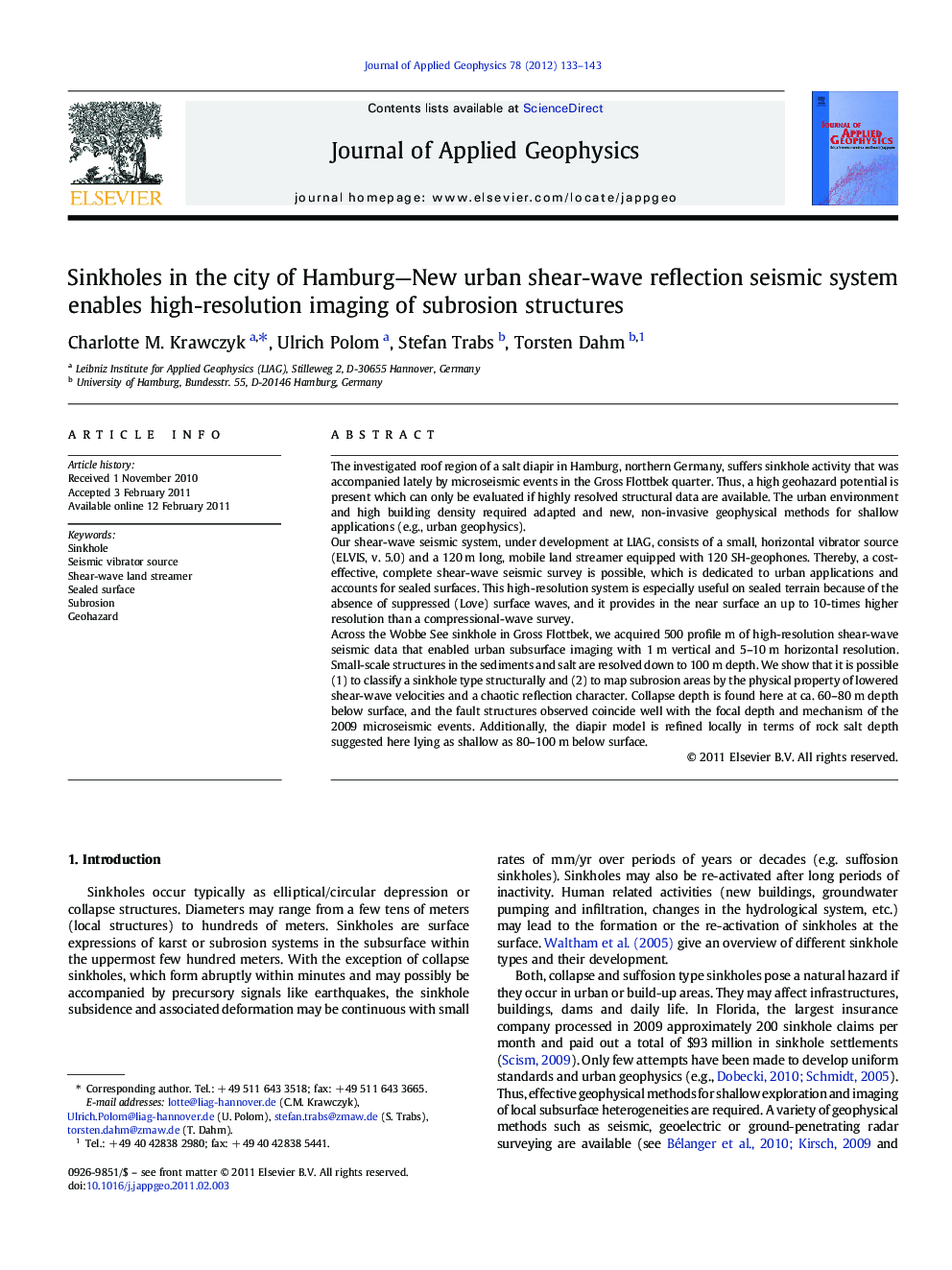| کد مقاله | کد نشریه | سال انتشار | مقاله انگلیسی | نسخه تمام متن |
|---|---|---|---|---|
| 4740782 | 1641173 | 2012 | 11 صفحه PDF | دانلود رایگان |

The investigated roof region of a salt diapir in Hamburg, northern Germany, suffers sinkhole activity that was accompanied lately by microseismic events in the Gross Flottbek quarter. Thus, a high geohazard potential is present which can only be evaluated if highly resolved structural data are available. The urban environment and high building density required adapted and new, non-invasive geophysical methods for shallow applications (e.g., urban geophysics).Our shear-wave seismic system, under development at LIAG, consists of a small, horizontal vibrator source (ELVIS, v. 5.0) and a 120 m long, mobile land streamer equipped with 120 SH-geophones. Thereby, a cost-effective, complete shear-wave seismic survey is possible, which is dedicated to urban applications and accounts for sealed surfaces. This high-resolution system is especially useful on sealed terrain because of the absence of suppressed (Love) surface waves, and it provides in the near surface an up to 10-times higher resolution than a compressional-wave survey.Across the Wobbe See sinkhole in Gross Flottbek, we acquired 500 profile m of high-resolution shear-wave seismic data that enabled urban subsurface imaging with 1 m vertical and 5–10 m horizontal resolution. Small-scale structures in the sediments and salt are resolved down to 100 m depth. We show that it is possible (1) to classify a sinkhole type structurally and (2) to map subrosion areas by the physical property of lowered shear-wave velocities and a chaotic reflection character. Collapse depth is found here at ca. 60–80 m depth below surface, and the fault structures observed coincide well with the focal depth and mechanism of the 2009 microseismic events. Additionally, the diapir model is refined locally in terms of rock salt depth suggested here lying as shallow as 80–100 m below surface.
Graphical AbstractFigure optionsDownload as PowerPoint slideResearch highlights
► Shear-wave reflection seismic system enables urban subsurface imaging with high resolution (1 m vertical).
► Subrosion mapping with shear-wave velocity and reflection character is possible.
► Small-scale structures in sediments and salt are resolved down to 100 m depth.
► Collapse depth at 80 m updates local salt model.
Journal: Journal of Applied Geophysics - Volume 78, March 2012, Pages 133–143